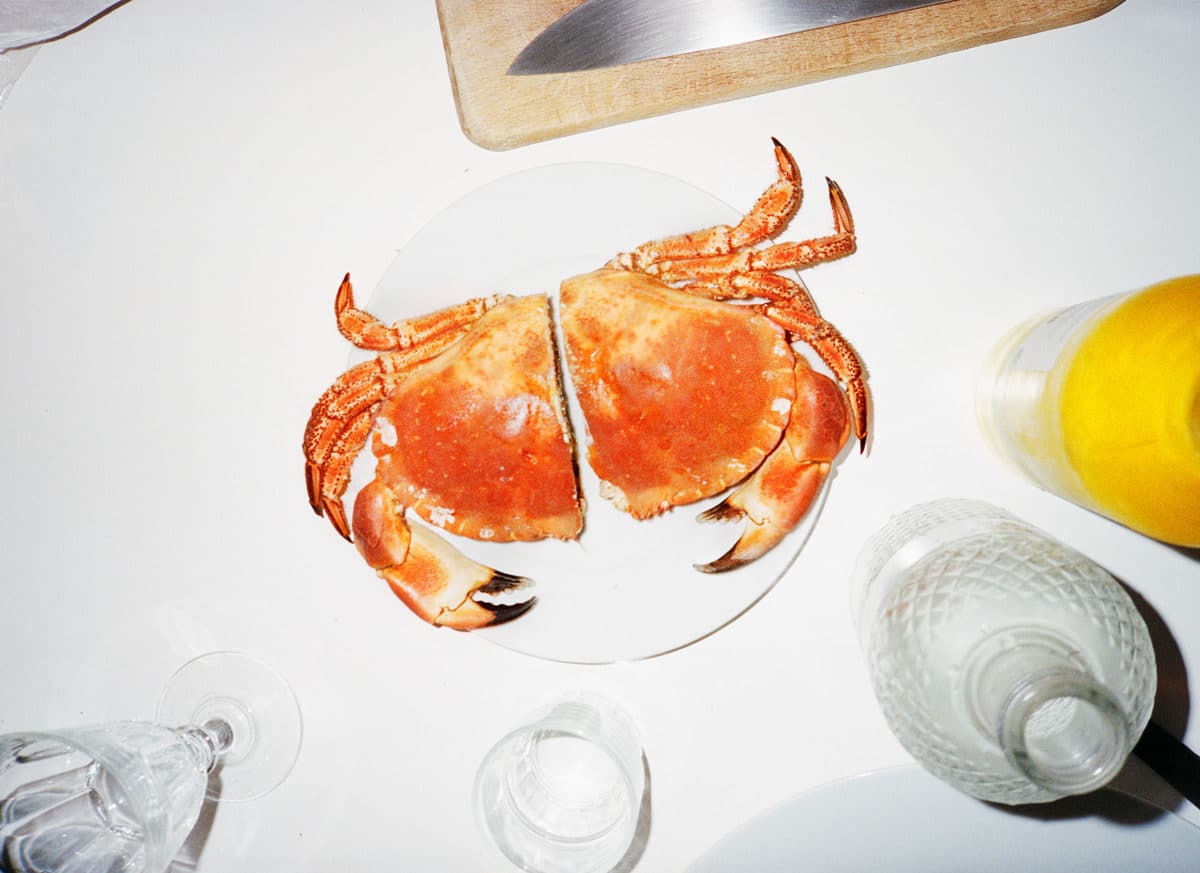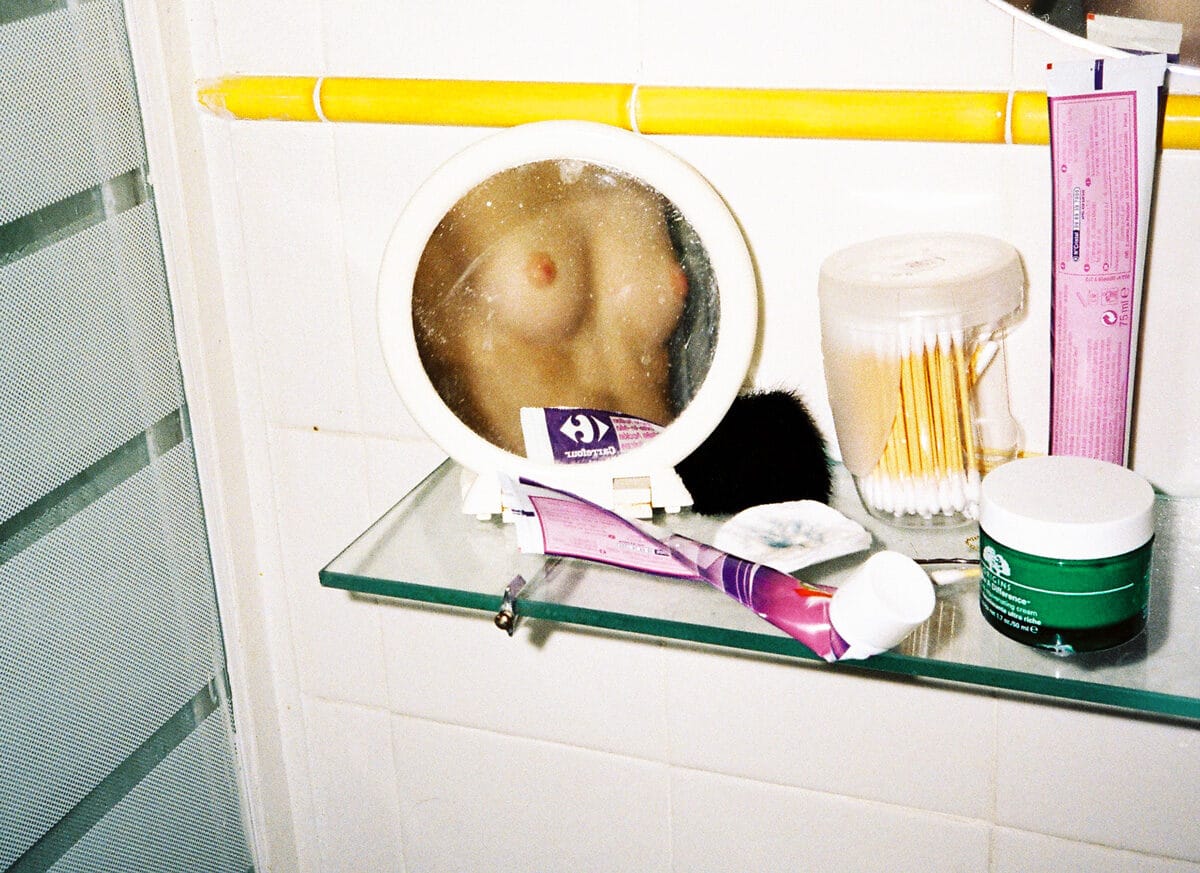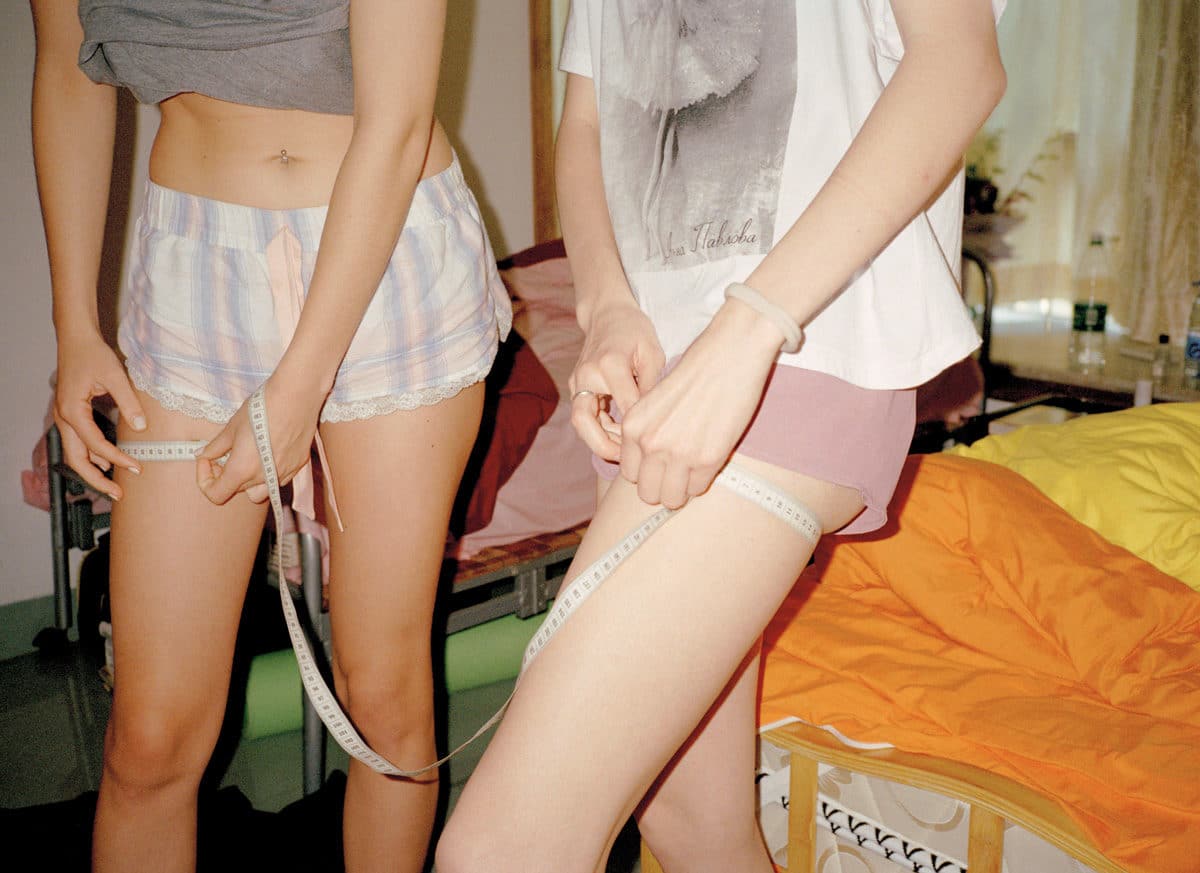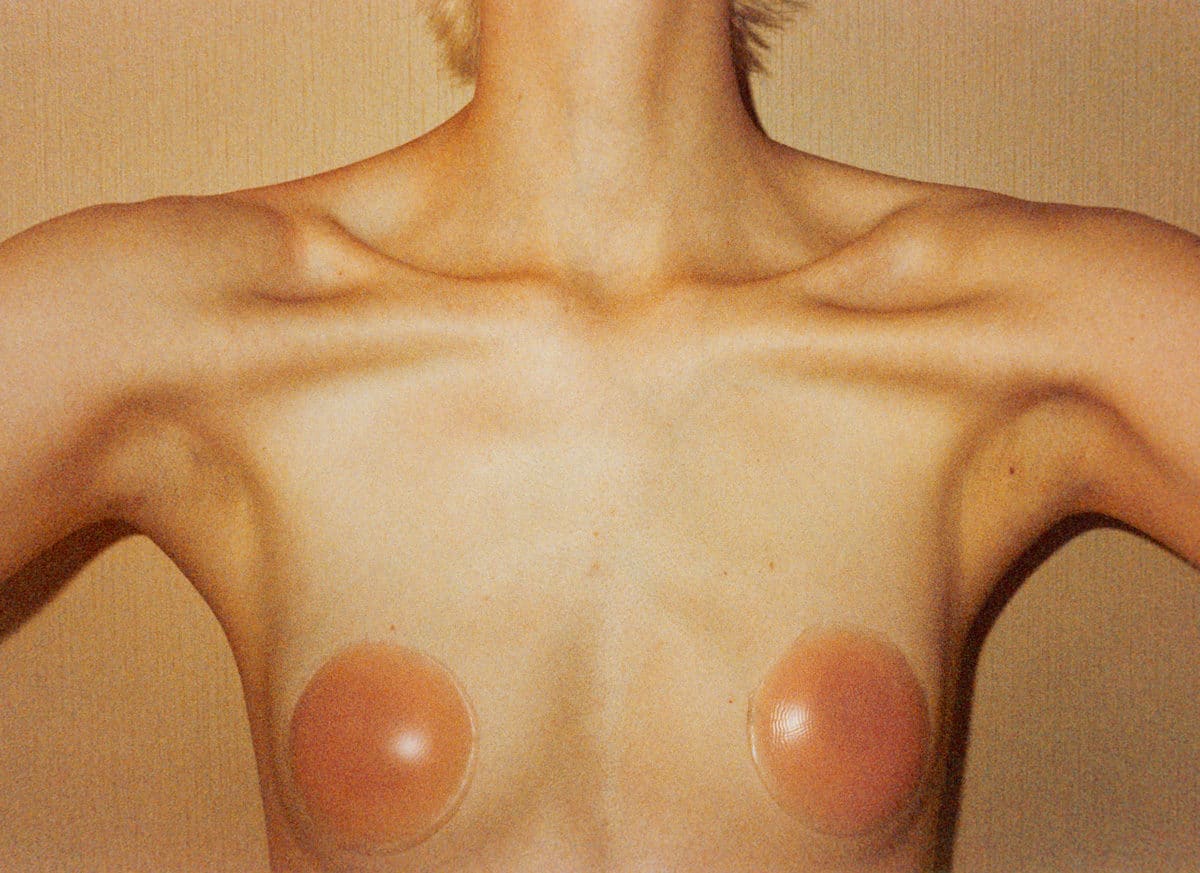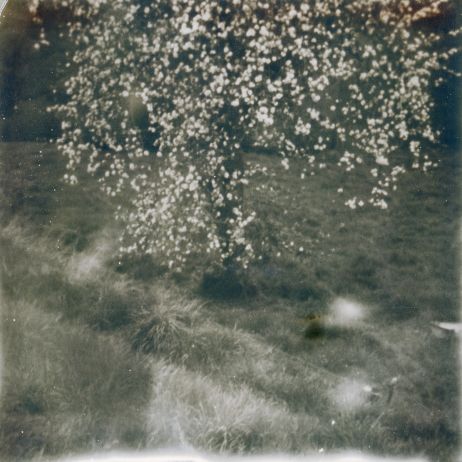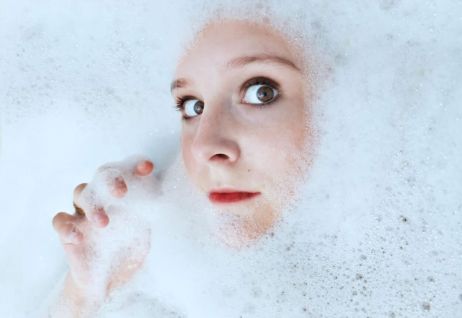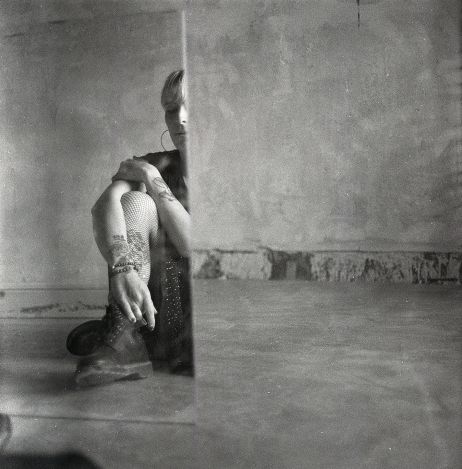Flat parties, backstages of fashion shows, photoshoots… Behind the glitters of modeling hides a melancholic loneliness, and a complex relation with one’s body and self. By putting together images and texts, Danish model Matilde Søes Rasmussen captures – with dark humour and cynical poetry – this fascinating and repelling universe. She signs, with Unprofessional, an atypical body of work far from the polished and luxurious image of fashion. Interview.
Fisheye : Who are you?
Matilde Søes Rasmussen: I am an artist and writer born and raised in the Jutlandic village Alling in Denmark in 1990. I am also a model, and have been for 13 years and counting.
How did you become a photographer?
I’ve studied photography for about five years! Or on a more poetic note, I got a postcard from my friend with a photo by Larry Clark of a girl tied face down on a bed and a guy pointing a gun at her (or was it his penis?). I remember that as a sort of opening into art. I was then admitted to a school in Denmark but meanwhile had fallen in love with a guy in Paris. So, I decided to ditch the school and stay. There, I had to find a hobby. Or maybe it was just a little bit random?
How do you approach photography?
I collect for years and then edit. I’m currently trying to change this approach, though, because it’s tiring. My biggest dream is to exhaust my archive and never look back! That’s what I tried to do with this book, but completely failed to do so. I am now working on a new project with a lot of archive material again. I usually have a few projects going on at the same time, so I also produce shorter term projects. Especially with my artistic partner, Marie Flarup Kristensen. Some of my favourite projects have been shot and finalised in one or two weeks with her.
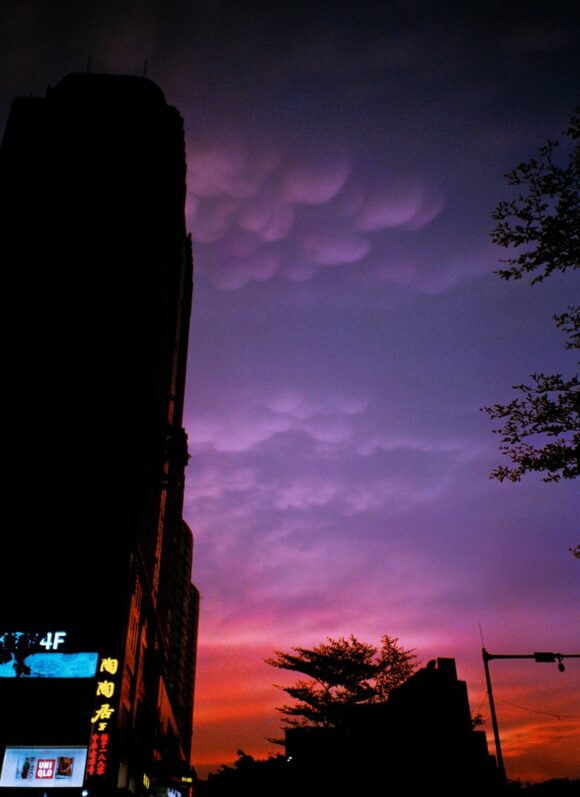
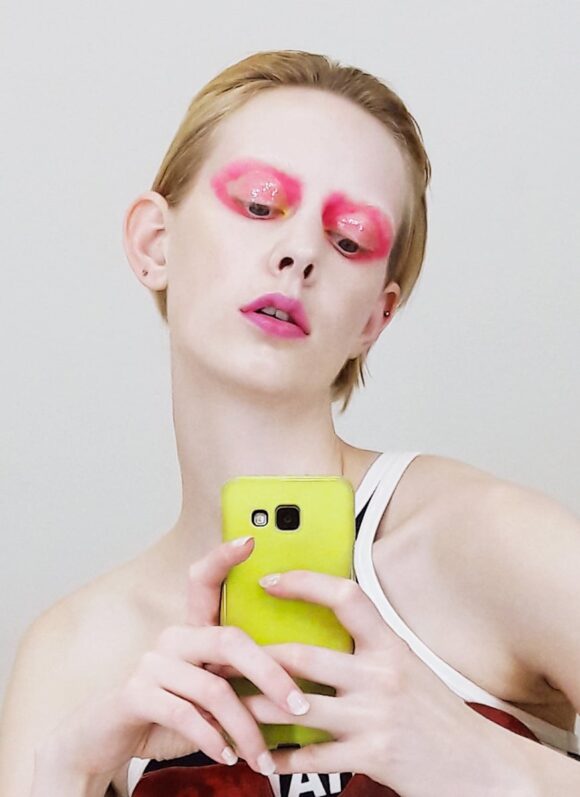
Do you usually work that fast?
No, I am a slow person in general. My friends are always annoyed at me when we travel together. I get dressed slowly; I eat slowly. But I walk fast! I always find that planets magically align perfectly in the end. This is going to sound really silly, but when I was finishing this book and was pressured for time, I would visualise myself as an old train moving slowly towards its final destination, and somehow, I always managed to arrive on time!
What is your take on modelling, being a model yourself?
I think the concept of the “model” is so interesting. Models function as these figures of admiration, but at the same time, everyone hates them. They are both ridiculed and glorified, and if you look at their function in their purest form, they are a body that is being sold: the body is transformed into pure capital. We will literally put a 16-year-old girl as the face of some brand. What is she supposed to represent? It’s ridiculous, but also funny and worrisome!
What about your place in all of this?
It’s still hard for me to say that I work as a model after having done it for more than a decade – I always sort of mumble it out in an awkward way and try to steer the conversation onto something else. My thought has always been: “how can you be proud of something that you did nothing to earn?” But the fact is, the models I have met, all work their arses off, more than anyone else I know.
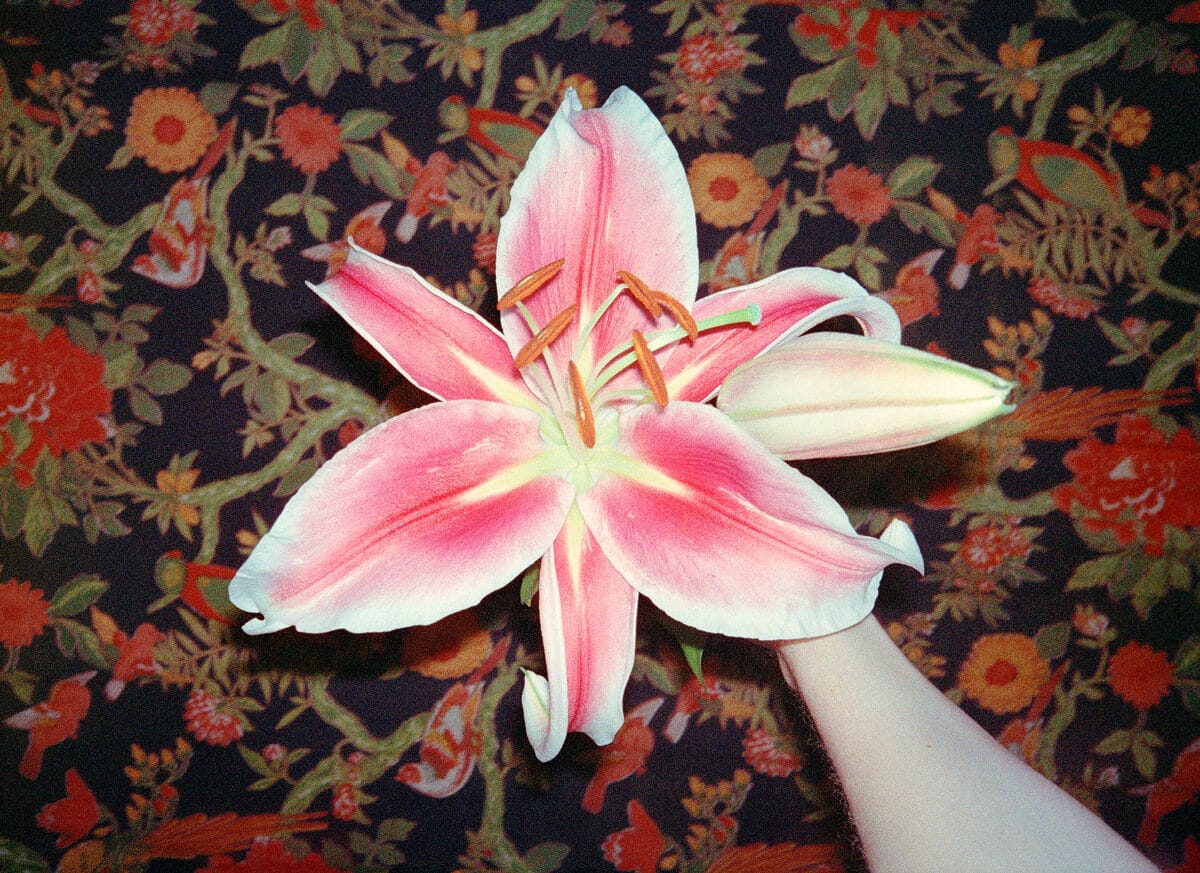
Unprofessional reads as a deeply personal book, would you compare it to a diary?
It is a performance rather than a diary. It has been heavily edited over the past couple of years. Nothing in there is random nor spontaneous. But I like that it reads this way. A lot of the texts were originally written on my phone while on shoots or hanging out in the model apartment, so there is an element of diary there. It’s a play on dressing up, disguising, and playing different characters – you can do that with clothes, or you can do it with words.
Still, you do reveal much of yourself in this book.
Do I? I think it relates to the performativity I mentioned earlier. Because there are photographs in there that people tend to perceive as being close to the truth, when they are actually just photographs and words. There’s a lot of me in there, but also a lot of modelling. And I think modelling in its essence is roleplaying, or maybe even lying. The job is literally to deceive.
The quote on the back cover of the book, “Follow your heart”, is something you hear quite often as a model, in various versions: “just be yourself”, “look natural”, “stop posing”. I don’t believe there is such a thing as authenticity in modelling or in photography. That’s also why I would rather use a word like performance rather than documentary in relation to this work.

What is your relationship to selfies? How does it compare to your professional photoshoots?
For many years I didn’t connect the fact that I was both in front of the camera and behind. I didn’t realise how me photographing was linked to me modelling, when in fact they are connected by being opposites: as a model you are out of control, as a photographer you are in control. These hierarchies of power and control are what is so interesting to me about modelling. And then, you throw in some money and beautiful kids posing as if they were adults – what a cocktail!
Self-portraits, portraits of your colleagues taken on the road, still-lifes… Why did you mix all these photographic genres?
I don’t know how to do it any other way. I am a messy person, and my work is allowed to contain many mediums, techniques, layers and qualities.
What is your own relation to your body? To nudity?
My relation to my body is both good and difficult. I often hate it, and often feel like a hot stud! I sometimes think about how I would have felt about my body if I hadn’t been modelling. Probably in a totally different way. And sometimes I grieve that I will never know. As a teenager I felt tall, lanky and ugly, I hated myself. Like any teenager. So somehow modelling was also a relief from that, however sad that sounds.
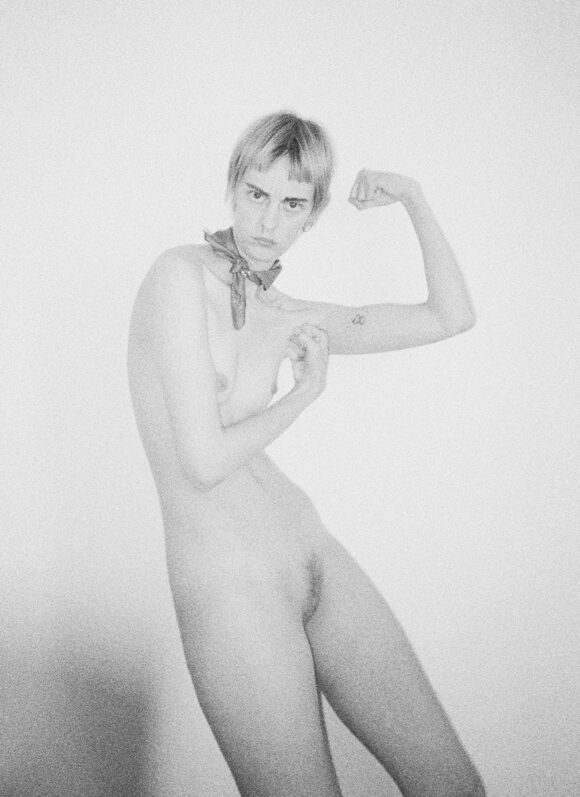
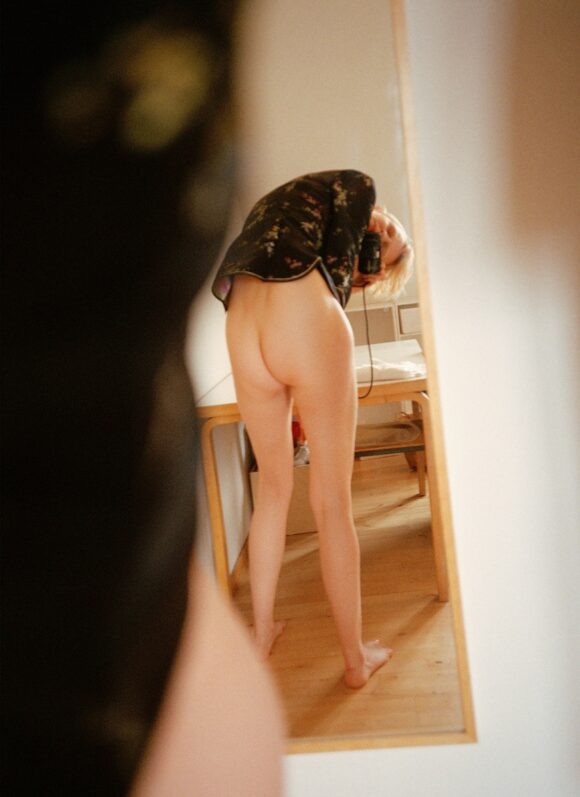
The way you depict your life as a model can seem a bit cynical, why?
I just had one of my good friends text me that she thought the book was hilarious! A big part of my work is based on humour, but beneath the humour there is, of course, always sadness and self-hatred. I also like to laugh at the absurdity and silliness of the job. I am extremely grateful for where this job has taken me, and for the people it has allowed me to meet. And I have taken advantage of it as much as possible – I should have been retired years ago according to industry standards. I always feel like the mom in the model apartments, I am twice the age of some of the other girls!
What themes do you explore throughout Unprofessional?
Capitalism and having a body inside it. And loneliness maybe.
Any sources of inspiration?
Swedish author Sara Stridsberg! Everyone should read The Faculty of Dreams, it’s a fiction on the life of Valerie Solanas who wrote the Scum Manifesto and shot Andy Warhol. It’s so sad, funny and childish. All the things I strive for my own work to be.
Unprofessional, Disko Bay Editions, 48€, 290 p.
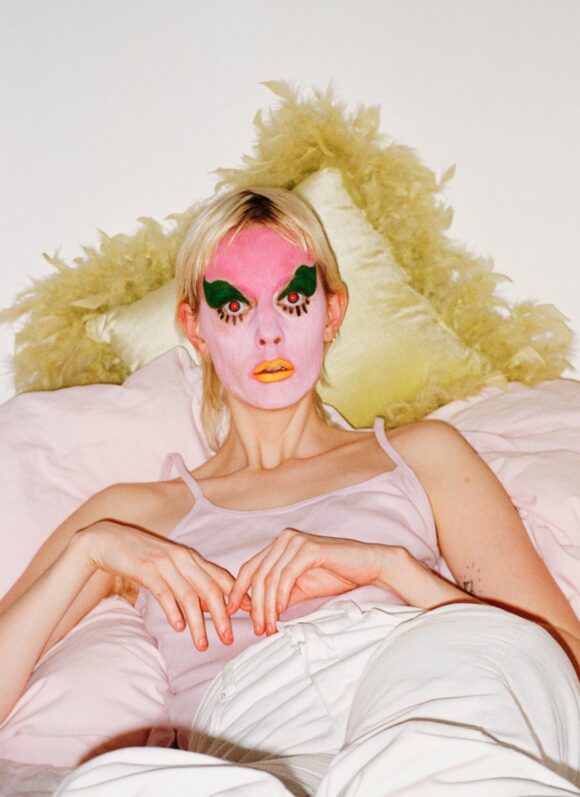
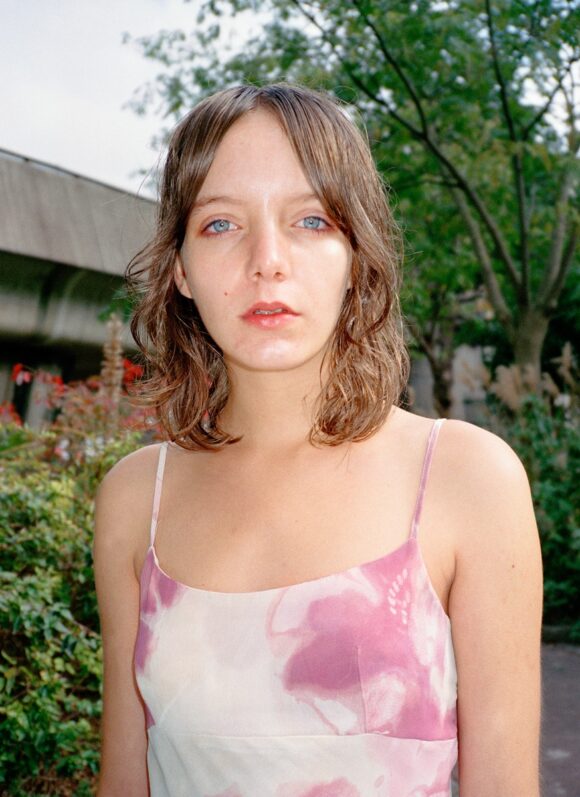
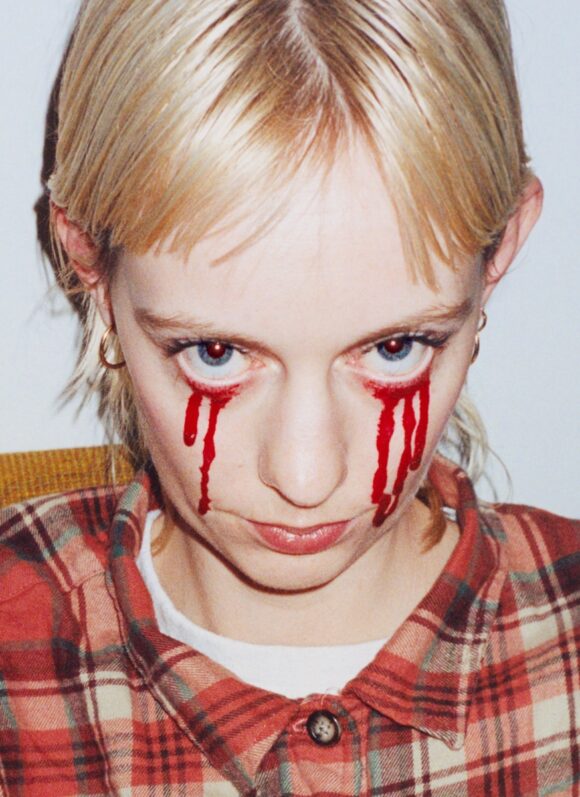
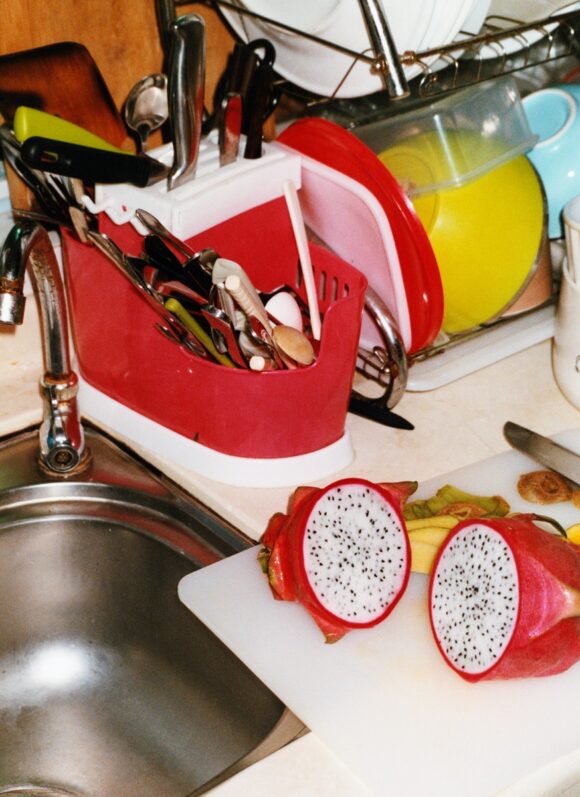
© Matilde Søes Rasmussen

